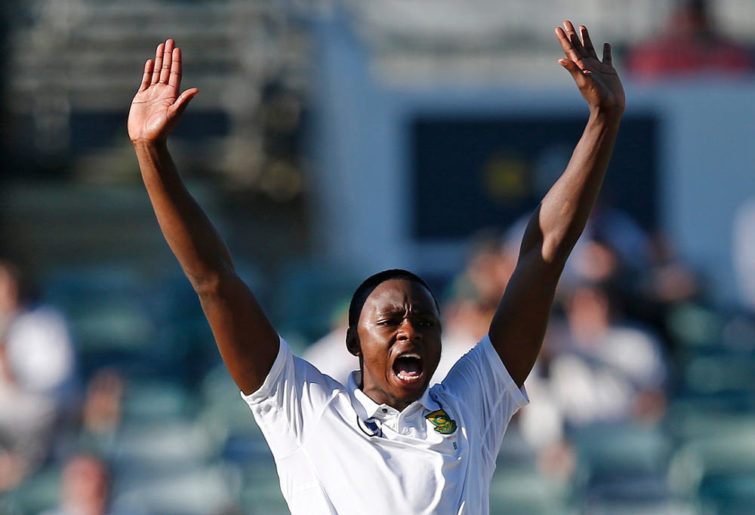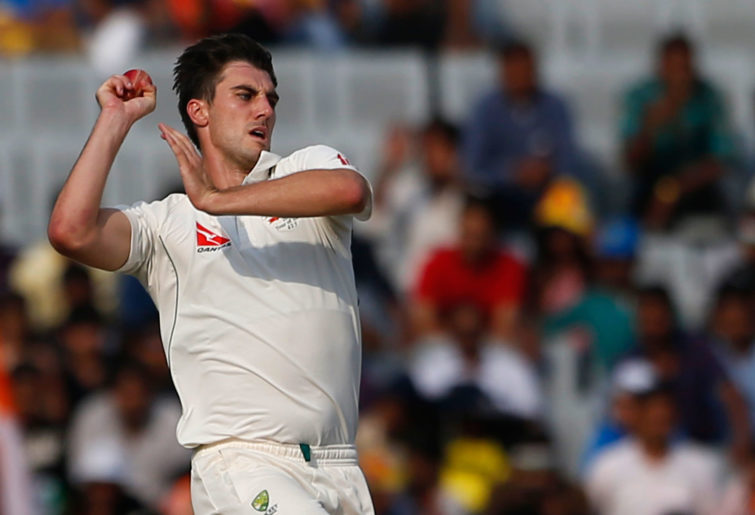Test cricket fans have long drooled over the batting of the Fab Four – Steve Smith, Virat Kohli, Kane Williamson and Joe Root. Now they have a Terrific Trio – quicks Pat Cummins, Jasprit Bumrah and Kagiso Rabada.
In a Test series featuring some of the world’s most highly-rated pacemen, it is 25-year-olds Bumrah and Cummins who have stood out.
Rabada, meanwhile, is clearly the best Test bowler on the planet, having hoarded 151 wickets at 21 by the tender age of 23.
The Fab Four was the name coined for Smith, Kohli, Williamson and Root more than four years ago by New Zealand’s late batting legend Martin Crowe in an article for ESPNCricinfo.
In this piece Crowe predicted this hyper-talented batting quartet would dominate Test cricket for years to come and take turns holding the official number-one batsman ranking. Four years on those four batsmen are currently in the top five of the rankings.
Few cricket followers would dispute that they are the four best Test batsmen in the world.
I see a parallel at this early stage with the Terrific Trio of Rabada, Bumrah and Cummins. Just like Crowe predicted the rise and consistent dominance of the Fab Four, I think the Terrific Trio are set to dominate this next era of Test cricket.
The Fab Four were grouped together by Crowe because they were all within two years of each other in age, just like the Terrific Trio.
While they aren’t yet the three best fast bowlers in Test cricket, I think that time may come. Veterans James Anderson (36 years old) and Vernon Philander (33) remain arguably as good as they ever have been, and the greatest fast bowler of the past decade, Dale Steyn (35) is not finished just yet.
Then there’s the likes of Mohammad Abbas (28), Mitchell Starc (28), Josh Hazlewood (27), Trent Boult (29), Neil Wagner (32), Stuart Broad (32), Tim Southee (30), Ishant Sharma (30) and Mohammad Shami (28) – all quality Test pacemen.
But some of those guys are past their best, while others just do not seem to have the same ceiling of performance or room for improvement as the Terrific Trio. Of that list, Abbas is the only quick I expect to compete with the Terrific Trio for the title of the world’s best Test paceman once Anderson, Philander and Steyn retire.
Many quicks do not reach their peak until they are about 27 or 28 years old, by which time they boast the perfect synthesis of experience and youthful dynamism. Which means it is entirely possible that all of the Terrific Trio may be significantly better Test bowlers in two or three years from now.
The standout attribute of this threesome is their ability to perform in a wide variety of conditions. This is the ultimate measure of a Test cricketer.
There have been countless bowlers who can shine in home conditions but precious few by comparison who can flourish away also.
Rabada is at his most menacing at home, where he averages 18, but has also been highly effective in England, Australia and Sri Lanka. At 23 years old he is a baby in cricketing terms and has all the physical tools, complemented by smarts, to be a commanding player in any conditions as his career progresses.

(AP Photo/Rob Griffith)
Cummins, meanwhile, displayed this trait from his very first Test as an 18-year-old in Johannesburg. The teenager was man of the match, taking seven wickets against an awesome SA batting line-up featuring all-time greats Jacques Kallis, AB de Villiers, Hashim Amla and Graeme Smith.
Cummins’s record away from home is arguably even better than Rabada’s, with 35 wickets at 23 from eight Tests.
After a five-year-absence from Test cricket following his stunning debut, Cummins returned last year and was easily Australia’s best quick across his four Tests in India and Bangladesh.
He proved he could prosper on slow, dry surfaces thanks to his height, accuracy, searing pace, brilliant bouncer and amazing endurance and persistence.
These attributes were all on display across the first five innings of this current series against India. Yet Cummins did not get the rewards he deserved for his consistent excellence, taking just eight wickets at 32 in that time. He outbowled Starc and Hazlewood across those five innings, yet it was they who had the better figures.
Then yesterday the dam wall broke for Cummins. He grabbed 4-10 in the last session during a spell which was of high quality but, in reality, was no better than several others he had delivered earlier in the series. Cummins rarely disappoints with the ball.
After 17 Tests he has the incredible record of 78 wickets at 23, which equates to 4.6 wickets per Test. As a comparison, Australia’s greatest-ever Test paceman, Glenn McGrath, after 17 Tests had taken 68 wickets at 28. At that stage McGrath was a few months older than Cummins is now.

(AP Photo/Aijaz Rahi)
That’s not to suggest Cummins can go close to matching McGrath, but it is a sign of just what a remarkable start the young Aussie has made to his Test career.
What makes Cummins’s record all the more extraordinary is that he does not get the luxury of taking the new ball, unlike Rabada, Bumrah, Anderson, Abbas et cetera.
As good as Cummins is, Bumrah has been even better in this series. With 17 wickets at 14 thus far he is putting together one of the most impactful Test series by a visiting bowler to Australia in the modern era.
Granted, his task is simpler than Cummins’s. Instead of having to bowl to accomplished veterans Virat Kohli, Cheteshwar Pujara and Ajinkya Rahane, Bumrah is making minced meat of the weakest Test batting line-up Australia have fielded in more than 30 years.
But it is not Bumrah’s fault that he can’t compete against Australia’s banned superstar batsmen Smith and David Warner. He can only dismantle what is put in front of him. And dismantle he has. From his first spell to his last in each innings, Bumrah has harassed the Australian batsmen.
Whether with new ball or old ball. Whether from over or around the wicket. Whether bowling full, short or back of a length. Whether moving the ball into or away from the batsman.
The young Indian has been relentless. That adjective is the same one I expect to be used in years to come to describe the rise of the Terrific Trio.






























































































